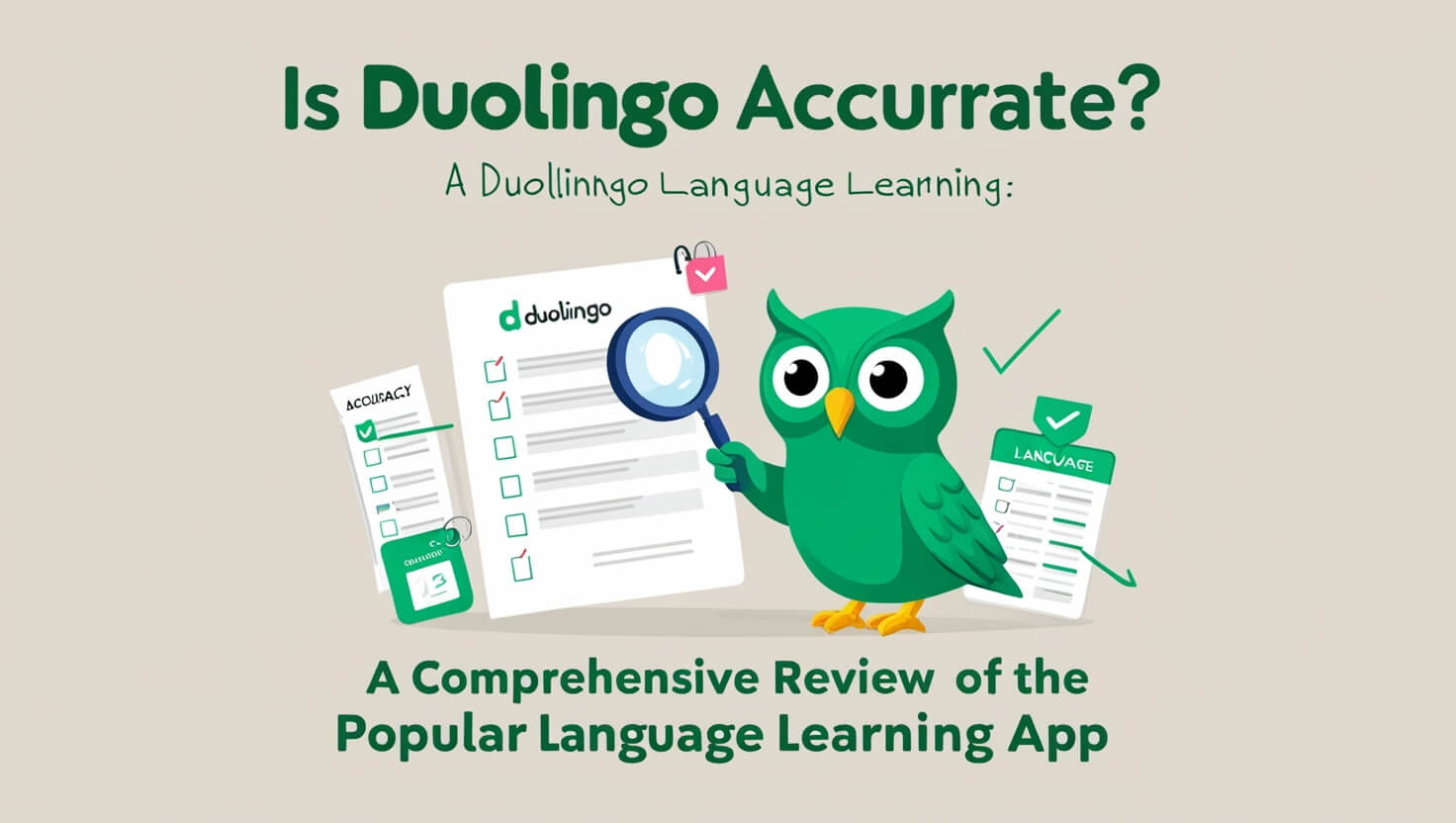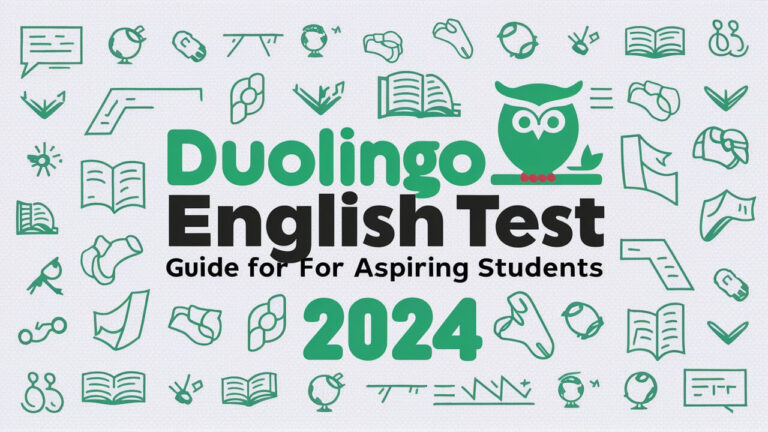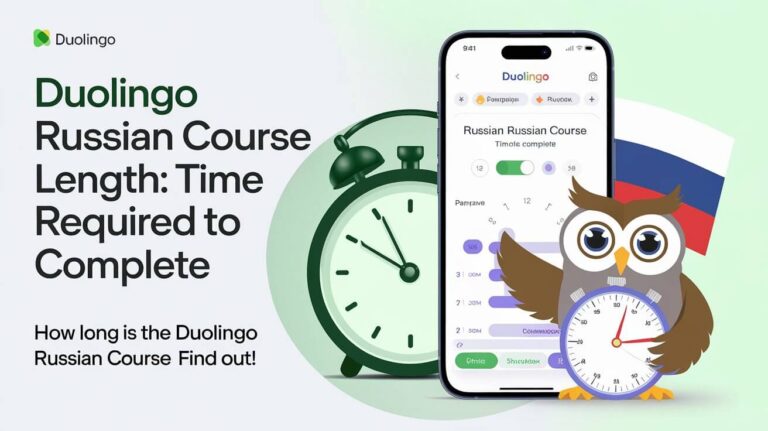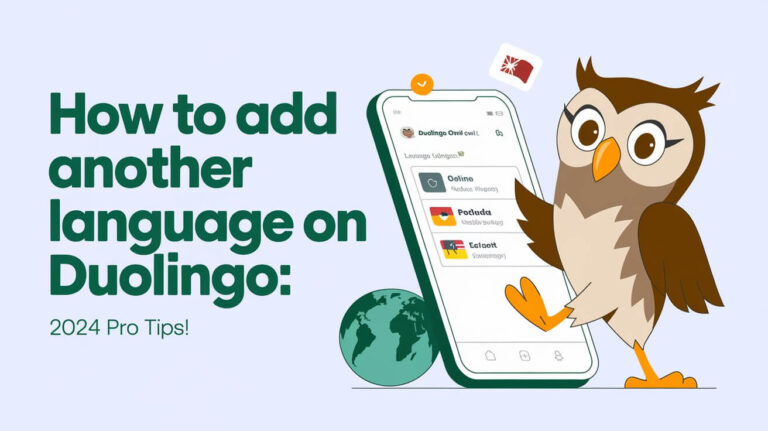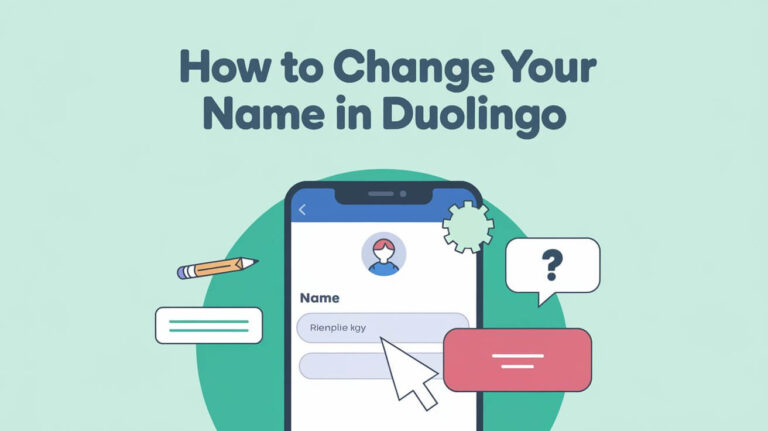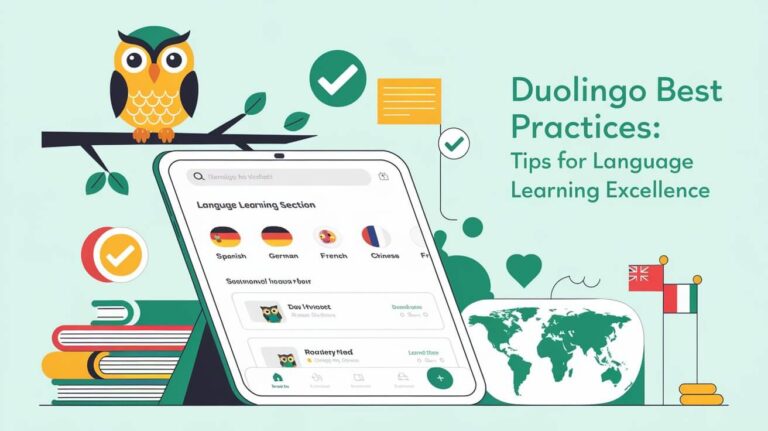Learning a new language can be tough. But what if there was an app that made it fun and easy? Enter Duolingo, the colorful owl-mascot app that’s taken the language learning world by storm. Duolingo offers a mix of accurate and simplified language learning, with strengths in vocabulary and basic grammar, but some limitations in advanced language skills and cultural nuances.
In this post, we’ll explore Duolingo’s accuracy across various aspects of language learning. We’ll look at how well it teaches vocabulary, grammar, pronunciation, and more. By the end, you’ll have a clear picture of what Duolingo does well and where it falls short.
What is Duolingo?
Duolingo is a free language learning app that uses games and short lessons to teach languages. It’s like having a pocket-sized language tutor, always ready when you are. The app uses bright colors, cute animations, and game-like features to keep learners engaged.
But here’s the big question: Does all this fun actually lead to accurate language learning?
How Duolingo Works: A Closer Look at Its Methodology
Duolingo turns language learning into a game. You earn points, level up, and compete with friends. It’s designed to keep you coming back day after day.
Gamification and Language Learning
The app uses short, bite-sized lessons. You might translate sentences, match words to pictures, or speak phrases out loud. It’s all designed to feel more like play than work.
Duolingo’s Lesson Structure and Progression
Lessons are organized into skill trees. You start with basics and slowly work your way up to more complex topics. The app tracks your progress and reviews old material to keep it fresh in your mind.
The Role of Artificial Intelligence in Duolingo’s Accuracy
Duolingo uses AI to personalize lessons and adapt to your learning style. It tries to figure out what you know and what you need to practice more.
Assessing Duolingo’s Accuracy in Vocabulary Teaching
Vocabulary is a key part of language learning. So how well does Duolingo teach new words?
Word Selection and Relevance
Duolingo focuses on common, everyday words first. This is good for beginners, but might not cover all the vocab you need for specific situations.
Context-Based Learning vs. Rote Memorization
The app teaches words in sentences, not just as isolated vocab lists. This helps you understand how words are used in real life.
Accuracy of Translations and Definitions
Duolingo’s translations are generally accurate for simple sentences. But sometimes they can be overly literal or miss nuances in meaning.
Grammar Instruction: How Precise is Duolingo?
Grammar can be tricky. Let’s see how Duolingo handles it.
Implicit vs. Explicit Grammar Teaching
Duolingo often teaches grammar through example rather than explicit rules. This can work well for simple concepts but might leave you confused about more complex grammar.
Handling Complex Grammatical Structures
For tougher grammar points, Duolingo sometimes oversimplifies. This can lead to gaps in understanding for more advanced learners.
Common Grammar Mistakes and Duolingo’s Approach
The app is good at catching common errors. It often explains why something is wrong, which helps reinforce correct usage.
Pronunciation and Accent: Duolingo’s Accuracy in Speaking Skills
Speaking is a crucial part of language learning. How does Duolingo measure up?
Speech Recognition Technology: How Accurate Is It?
Duolingo uses speech recognition to check your pronunciation. It’s pretty good at catching major errors, but it’s not perfect. Sometimes it might mark you correct when you’re a bit off, or vice versa.
Teaching Proper Pronunciation and Intonation
The app provides audio for all sentences and words. This helps you hear how things should sound. But it doesn’t always explain the finer points of pronunciation.
Limitations in Accent Training
Duolingo typically uses one standard accent for each language. This doesn’t prepare you for the variety of accents you might encounter in real life.
Reading and Writing Skills: Evaluating Duolingo’s Effectiveness
Reading and writing are key language skills. Let’s see how well Duolingo develops them.
Text Comprehension Exercises
Duolingo includes short reading exercises. These are good for beginners but might not prepare you for longer, more complex texts.
Writing Practice and Feedback Accuracy
The app offers some writing practice, mainly through translation exercises. The feedback is usually accurate for simple sentences but might miss nuances in more complex writing.
Challenges in Teaching Non-Latin Scripts
For languages with different writing systems, like Chinese or Arabic, Duolingo’s approach can be limited. It might not fully prepare you for handwriting or reading authentic texts.
Listening Comprehension: How Well Does Duolingo Prepare Learners?
Understanding spoken language is crucial. How does Duolingo stack up?
Audio Quality and Variety
Duolingo uses clear, high-quality audio. But it often lacks variety in speakers and accents.
Speed and Clarity of Spoken Language
The app typically uses slower, clearer speech than you’d hear in real life. This is good for beginners but might not prepare you for natural conversation speeds.
Real-World Listening Skills vs. Duolingo’s Exercises
Duolingo’s listening exercises are somewhat simplified compared to real-world language use. They might not fully prepare you for understanding native speakers in natural settings.
Cultural Context and Idioms: Does Duolingo Teach Accurate Usage?
Language isn’t just words and grammar. It’s also about culture. How does Duolingo handle this?
Incorporation of Cultural Elements
Duolingo touches on some cultural elements, but it’s not a deep dive. You might learn a few facts, but not get a rich understanding of the culture.
Idiomatic Expressions and Colloquialisms
The app includes some idioms and colloquial expressions. But it might not cover the full range you’d encounter in real-life language use.
Relevance to Real-World Language Use
Duolingo’s sentences can sometimes feel artificial. They’re designed to teach specific points, not always to reflect natural conversation.
Duolingo’s Accuracy for Different Language Levels
Duolingo caters to learners at various stages. Let’s look at how accurate it is for each level.
Beginner Level: Building a Strong Foundation
For beginners, Duolingo is quite accurate. It teaches basic vocabulary and grammar effectively.
Intermediate Level: Expanding Language Skills
At the intermediate level, Duolingo starts to show some limitations. It might not cover all the nuances and complexities you need.
Advanced Level: Pushing the Limits of App-Based Learning
For advanced learners, Duolingo’s accuracy and usefulness decrease. It might not offer the depth and complexity needed at this level.
Comparative Accuracy: Duolingo vs. Traditional Language Learning Methods
How does Duolingo stack up against other ways of learning languages?
Classroom Learning vs. Duolingo
Duolingo can’t match the personalized feedback of a good teacher. But it offers more flexibility and constant access to practice.
Textbooks and Self-Study vs. App-Based Learning
Duolingo is more engaging than most textbooks. But it might not offer the same depth of explanation for complex topics.
Immersion Programs vs. Duolingo’s Approach
Nothing beats immersion for language learning. Duolingo can’t recreate that experience, but it can be a useful tool to prepare for or supplement immersion.
User Experience and Motivation: Impact on Learning Accuracy
Duolingo’s design affects how well and accurately you learn. Let’s explore this.
Gamification Elements and Learning Retention
The game-like features can boost motivation and help you remember what you’ve learned. But they might also distract from deeper learning at times.
Streak System and Consistent Practice
Duolingo’s streak system encourages daily practice. This consistency can improve accuracy over time.
Personalized Learning Paths and Accuracy
The app tries to adapt to your needs. This can help focus on areas where you need more practice, potentially improving accuracy.
Updates and Improvements: Duolingo’s Commitment to Accuracy
Duolingo is always changing. Here’s how they try to stay accurate.
User Feedback and Content Refinement
The app allows users to report errors. This helps Duolingo continuously improve its accuracy.
Collaborations with Language Experts
Duolingo works with language experts to develop and refine its courses. This helps ensure accuracy in the content.
Continuous Algorithm Improvements
The app’s AI is always learning and improving. This can lead to more accurate lessons and better personalization over time.
Limitations and Criticisms of Duolingo’s Accuracy
No learning tool is perfect. Here are some of Duolingo’s weak points.
Oversimplification of Language Concepts
Sometimes, Duolingo oversimplifies complex language points. This can lead to gaps in understanding.
Lack of In-Depth Explanations
For some topics, especially grammar, Duolingo doesn’t provide detailed explanations. This can leave learners confused about why certain rules exist.
Artificial Sentence Structures and Translations
Some of Duolingo’s sentences can feel unnatural or overly literal. This might not prepare you for real-world language use.
Maximizing Duolingo’s Accuracy: Tips for Learners
Here’s how to get the most accurate learning experience from Duolingo.
Supplementing Duolingo with Other Resources
Use Duolingo alongside other tools like textbooks, language exchange apps, or online courses for a more rounded approach.
Engaging with Native Speakers
Practice with native speakers to test and improve the accuracy of what you’ve learned on Duolingo.
Setting Realistic Expectations
Remember that Duolingo is a tool, not a magic solution. It’s most accurate for beginners and early intermediate learners.
The Future of Duolingo: Potential Improvements in Accuracy
What might the future hold for Duolingo’s accuracy?
Advanced AI and Machine Learning Integration
Future versions might use more advanced AI to provide even more personalized and accurate lessons.
Enhanced Personalization and Adaptive Learning
Duolingo could become better at adapting to individual learning styles and needs, improving accuracy for each user.
Expansion of Real-World Language Application
We might see more features that connect Duolingo learning to real-world language use, improving overall accuracy.
Conclusion: Is Duolingo Accurate Enough for Effective Language Learning?
So, is Duolingo accurate? The answer isn’t a simple yes or no. Duolingo is quite accurate for basic vocabulary and grammar, especially for beginners. It’s a fun, engaging way to start learning a language or to supplement other learning methods.
However, it has limitations. It might oversimplify complex concepts, lack in-depth explanations, and not fully prepare you for real-world language use. For more advanced learning or full fluency, you’ll need to go beyond Duolingo.
The key is to use Duolingo as part of a broader language learning strategy. Combine it with other resources, practice with native speakers, and set realistic goals. With this approach, Duolingo can be an accurate and effective tool in your language learning journey.
Remember, language learning is a marathon, not a sprint. Duolingo can help you take those first steps and keep you motivated along the way. So why not give it a try? You might be surprised at how much you can learn with this little owl as your guide. C

